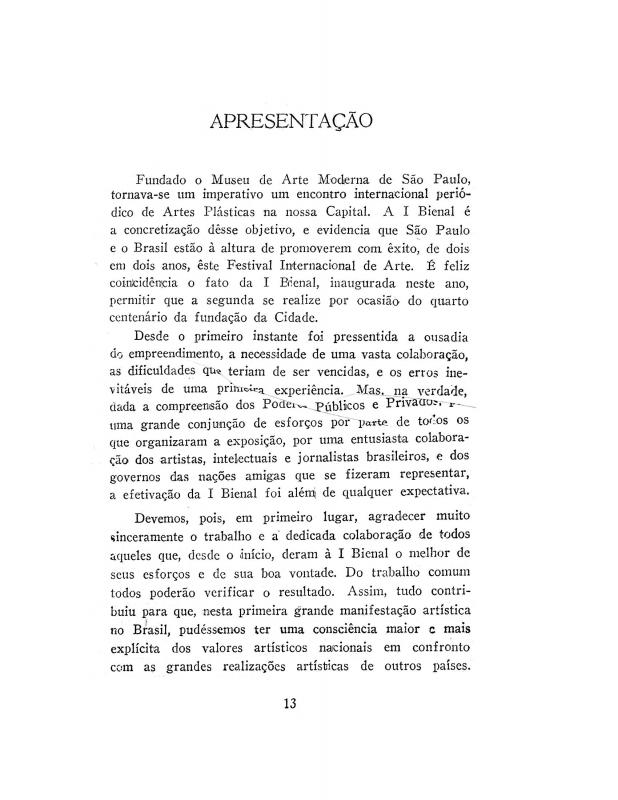This letter lists the institutions and names that were contacted in the various European countries, indicating which organizations or agencies represented them at that time (British Council, Action Artistique—that was later known as the Association Française d’Action Artistique, and today is called Cultures France—and the Dutch Information Service). Itamaraty was obviously involved on behalf of Brazil (through the Minister, Souza Leão). This letter documents the relationships that Brazil had with several European countries as regards the organization of the 1st São Paulo Biennial. The reference to entities such as the British Council and Action Artistique indicates the level of official cooperation that existed between the Fundação Bienal de São Paulo and those foreign organizations. The letter also shows that the São Paulo Biennial was the result of an entirely Brazilian effort in the 1950s, and was not just copied from a foreign model.
Lourival Gomes Machado (1917?67) was a journalist, art critic, and art historian. In 1941 he joined forces with intellectuals such as Antonio Candido, Paulo Emílio Salles Gomes, and Décio de Almeida Prado to publish Clima (São Paulo), a magazine designed to promote a renewal in the fields of Brazilian literary, cinema, and theater criticism. During that decade he was the art critic at the newspaper Folha da Manhã and covered world politics as a columnist at O Estado de S. Paulo. When the Belgian curator Léon Degand quit his job, Gomes Machado took his place as Director of the MAM/SP (Museu de Arte Moderna de São Paulo) (1949–51). His best-known work, Barroco Mineiro (1969), is a collection of articles on the subject, a project he began in 1953 with Teorias do Barroco.
To view this letter from a different perspective, see the introduction to the I Bienal del Museu de Arte Moderna de São Paulo written by Gomes Machado, in which he explains the objectives behind the organization of that grand event in “Apresentação” [doc. no. 1110834].
The Grande dame of society and coffee heiress Yolanda Penteado (1903–83) and her second husband, the Italian-Brazilian industrialist Francisco (Ciccillo) Matarazzo (1898–1977), were responsible for organizing the I Bienal do Museu de Arte Moderna de São Paulo, which opened to the public on October 8, 1951; they also organized the 2nd Biennial in 1953. Both Biennials contributed a great deal to the importance that this international event would achieve.
In addition to her involvement in the Bienal do Museu de Arte Moderna de São Paulo, Penteado played a key role in the founding of the Museu de Arte Moderna de São Paulo (MAM-SP), working closely with the newspaper magnate Assis Chateaubriand (1892–1968). Her entire private collection was donated to the Universidade de São Paulo as a basis for the Museu de Arte Contemporánea da USP. After founding these museums and events in the major Brazilian cities, she embarked on a joint initiative with Chateaubriand to open Regional Museums in the 1950s and 1960s, at Olinda (Pernambuco), Campina Grande (Rio Grande do Norte), and Feira de Santana (Bahia), among others.

